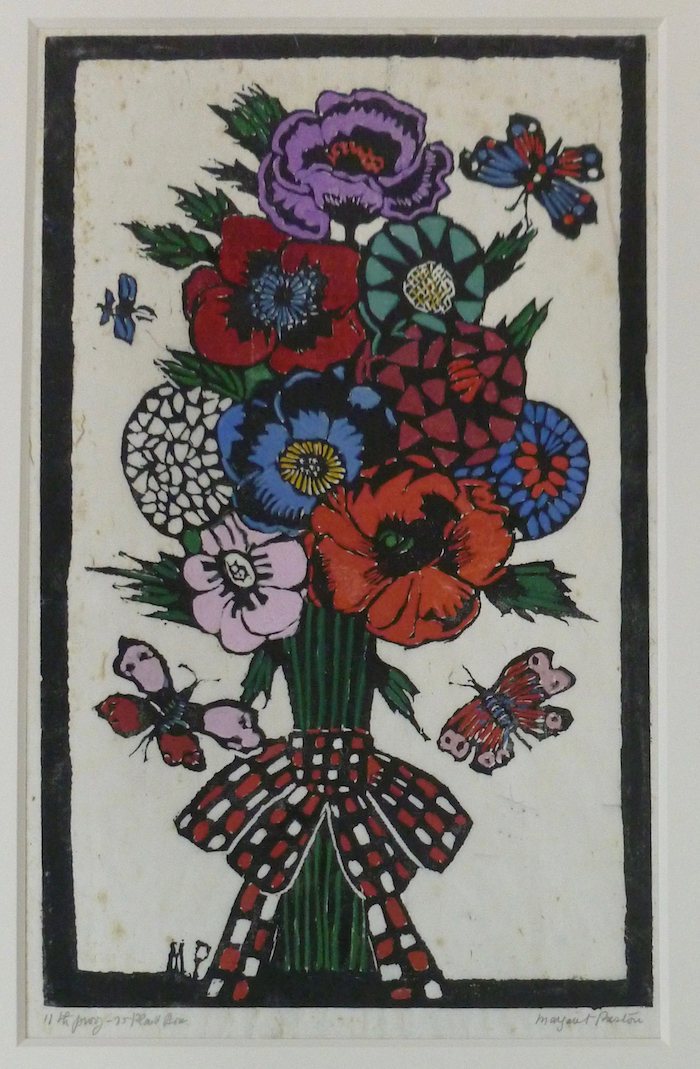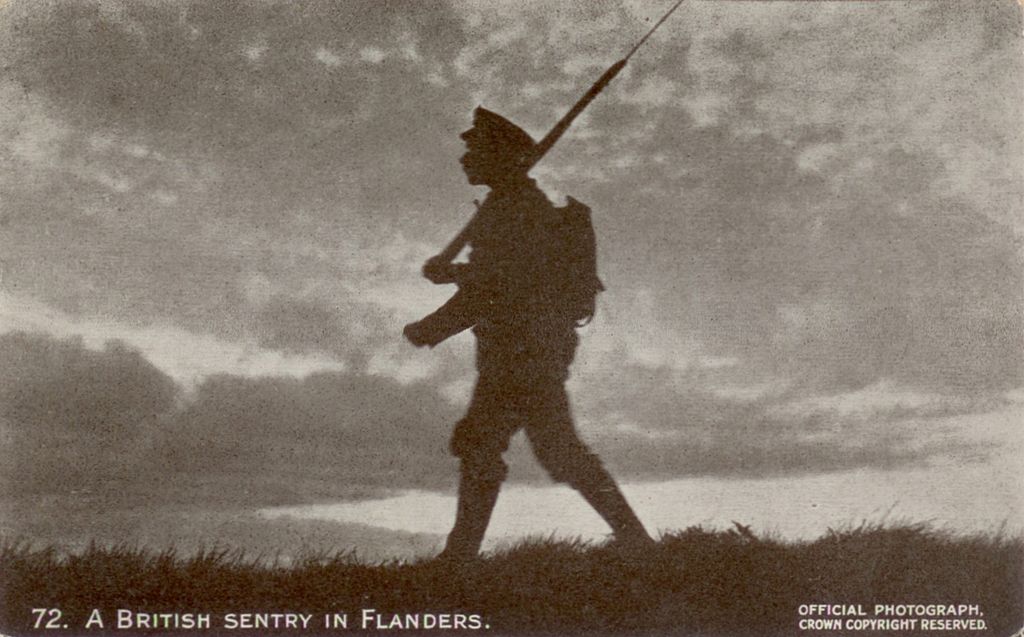Margaret Preston Woodblock
Condition
This beautiful object – an undated Margaret Preston woodblock – came into the studio recently in a very sorry state. As with many paper-based artworks, it had suffered badly from being framed with acidic materials. It was fully adhered to an acidic backboard, and the window mat (also of acidic board) was fully adhered to the front of the woodblock around all the edges. The print was on a Chinese laid paper, with little fibre strength left.

Margaret Preston woodblock – after treatment
The print was now badly discoloured, and had several severe ‘foxing’ spots. Foxing is the brownish, circular discolouration often seen in paper objects, and is a result of old mould growth. The paper was also very acidic (pH 4.5).
Treatment
The backing board and the window mat were carefully removed without disturbing the paper of the print. It was then ‘blotter washed’ with deionised water until no further discolouration (soluble acidity) was released. Following this, a last wash included an alkaline buffering solution to deal with any further acidity (insoluble) that may arise in the future. After consultation with the owner, the print was lined with a fine Japanese paper (Tengujo, 13 gsm) using wheat starch paste to provide more strength to the fragile paper.
The print was then framed to conservation standards by Sophie Brown Conservation Framing (http://www.conservationframing.com.au/) and the object returned to a clearly delighted client:
‘ I was amazed and delighted at the result of this conservation treatment – it has brought the work back to life. I feel like I have a new artwork to hang on my wall.’ Paul Isherwood, AO, 2016.




